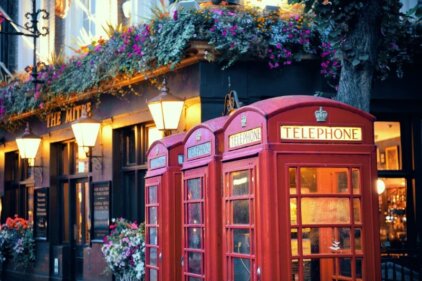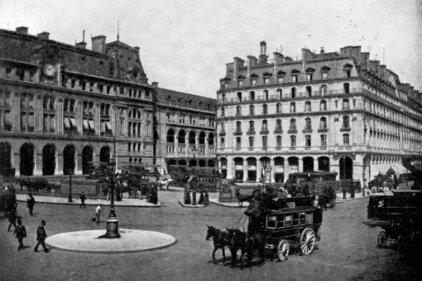London, the bustling capital of England, is not only known for its rich history and cultural heritage but also for its magnificent architectural marvels. From iconic landmarks that have stood the test of time to modern architectural trends that push the boundaries of design, London’s construction landscape is vibrant and ever-evolving. In this article, we will take you on a journey through the architectural wonders of London, delve into its construction history, explore the modern trends and sustainable practices, and shed light on the challenges and opportunities that the construction industry in London faces.
Introduction to London’s construction landscape
London, with its sprawling skyline and diverse architectural styles, is a haven for architecture enthusiasts. The cityscape is a tapestry of ancient and modern, with historical buildings like the Tower of London and St. Paul’s Cathedral standing tall alongside contemporary landmarks such as The Shard and the Gherkin. The construction landscape of London is a testament to the city’s rich history, as well as its ability to embrace innovation and modernity.
Iconic architectural landmarks in London
London is home to some of the most iconic architectural landmarks in the world. One cannot help but be in awe of the grandeur of Buckingham Palace, the official residence of the British monarch. The Palace of Westminster, with its iconic clock tower known as Big Ben, is another architectural gem that graces the banks of the River Thames. The majestic St. Paul’s Cathedral, designed by Sir Christopher Wren, is a masterpiece of architecture and a symbol of London’s resilience. These landmarks, among many others, are a testament to the rich architectural heritage that London possesses.
The history of construction in London
The history of construction in London can be traced back to Roman times when the city was known as Londinium. The Romans built impressive structures such as the London Wall and the Roman amphitheatre. Over the centuries, London went through various architectural transformations, from the medieval period with its timber-framed buildings to the Georgian and Victorian eras marked by grand townhouses and terraces. The Great Fire of London in 1666, which destroyed a significant portion of the city, led to the rebuilding of London with more fire-resistant materials such as brick and stone. The construction history of London is a fascinating journey through time, showcasing the evolution of architectural styles and construction techniques.
Modern architectural trends in London
London is at the forefront of modern architectural trends, with innovative designs that challenge traditional notions of architecture. One such example is The Shard, a towering glass skyscraper that dominates the London skyline. Designed by renowned architect Renzo Piano, The Shard is an epitome of contemporary architecture, combining cutting-edge design with sustainable features. Another notable trend in London’s architecture is the adaptive reuse of old buildings. The Tate Modern, housed in a former power station, is a prime example of how old structures can be transformed into vibrant cultural spaces. London’s modern architectural landscape is a testament to the city’s ability to embrace innovation and push the boundaries of design.
Sustainable construction practices in London
In recent years, there has been a growing focus on sustainable construction practices in London. From energy-efficient buildings to green spaces, the city is making significant strides towards a more sustainable future. The London Plan, a strategic document that sets out the city’s sustainable development policies, promotes the use of renewable energy, low-carbon materials, and green infrastructure. Additionally, the BREEAM (Building Research Establishment Environmental Assessment Method) certification is widely adopted in London, ensuring that buildings meet high standards of sustainability. The construction industry in London is actively embracing sustainable practices, paving the way for a greener and more environmentally friendly city.
Prominent construction projects in London
London is a hub of construction activity, with numerous prominent projects shaping the city’s skyline. One such project is Crossrail, a new railway line that will connect east and west London, reducing travel times and increasing capacity. Another notable project is Battersea Power Station, a mixed-use development that will transform the iconic power station into a vibrant neighborhood with residential, commercial, and cultural spaces. These projects, along with many others, are not only transforming the physical landscape of London but also contributing to its economic growth and development.
Architectural firms in London
London is home to some of the world’s most renowned architectural firms, known for their innovative designs and exceptional craftsmanship. Foster + Partners, led by Sir Norman Foster, is one such firm that has left an indelible mark on the city’s skyline with projects like The Gherkin and City Hall. Zaha Hadid Architects, founded by the late Zaha Hadid, is another prominent firm known for its avant-garde designs, including the London Aquatics Centre built for the 2012 Olympic Games. These architectural firms, along with many others, play a pivotal role in shaping London’s architectural landscape and pushing the boundaries of design.
Construction regulations and permits in London
The construction industry in London operates within a framework of regulations and permits to ensure the safety and quality of buildings. The Building Regulations, enforced by local authorities, set out minimum standards for design and construction, covering aspects such as structural integrity, fire safety, and energy efficiency. Planning permission is another crucial aspect of the construction process in London, ensuring that proposed developments adhere to the city’s planning policies. The regulatory framework ensures that construction projects in London meet high standards and contribute to the overall well-being of the city.
Challenges and opportunities in the construction industry in London
While London’s construction industry presents numerous opportunities for growth and innovation, it also faces several challenges. One such challenge is the shortage of skilled workers, with the demand for construction professionals outstripping the supply. Brexit has also posed challenges for the industry, with uncertainties surrounding labor supply and access to the European market. However, these challenges also present opportunities for the industry to invest in training and development, embrace new technologies, and explore emerging markets. The construction industry in London is resilient and adaptable, and it has the potential to overcome challenges and thrive in the face of adversity.
Conclusion: London’s ever-evolving construction landscape
London’s construction landscape is a tapestry of history, innovation, and sustainability. From iconic landmarks that tell the story of the city’s past to modern architectural marvels that shape its future, London is a testament to the power of design and construction. The city’s vibrant construction industry, supported by architectural firms and sustainable practices, continues to push the boundaries of innovation and create spaces that inspire and captivate. As London evolves and grows, its construction landscape will continue to be a reflection of its rich heritage and a beacon of creativity. So, next time you stroll through the streets of London, take a moment to admire the architectural marvels that surround you and appreciate the dynamic construction landscape that makes this city truly unique.





